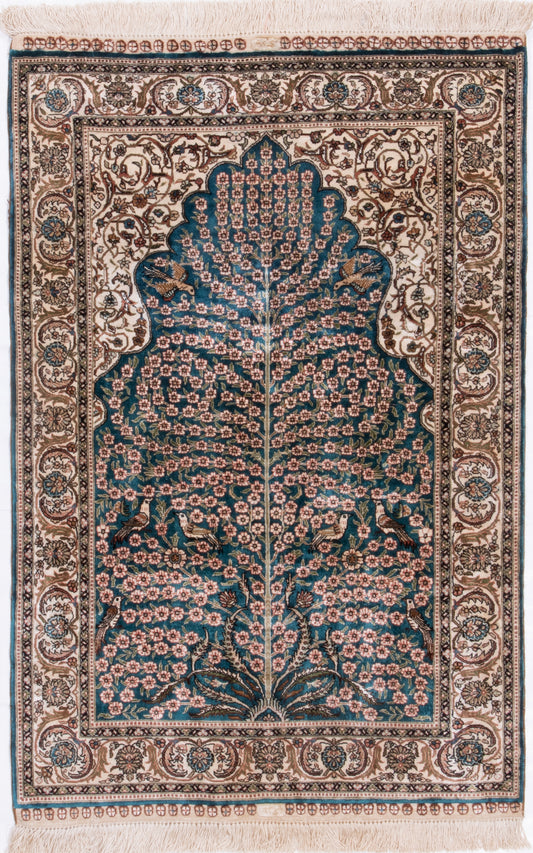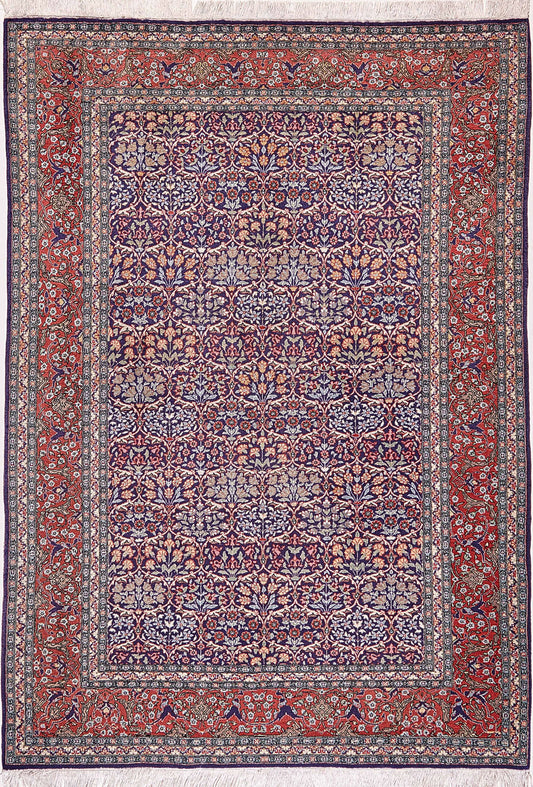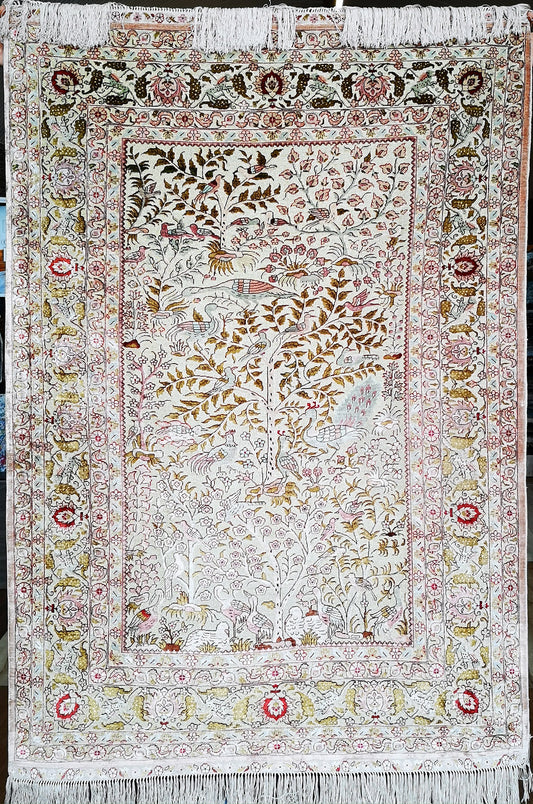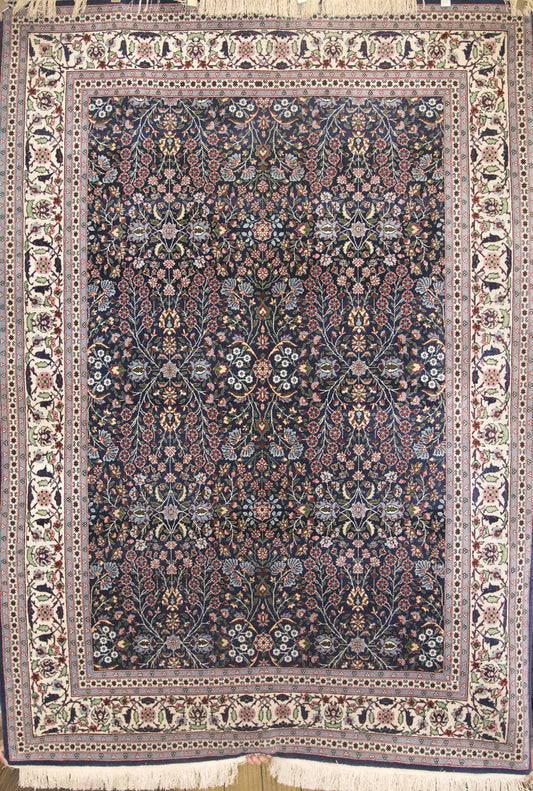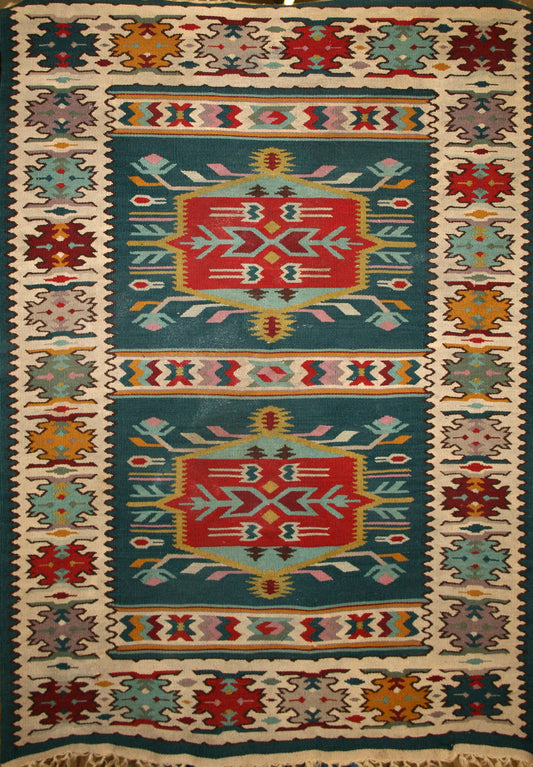Hereke Rug History & Origin Guide
Hereke rugs are synonymous with luxury, quality, and sophistication. These exquisite rugs originate from the small coastal town of Hereke, located near Istanbul, Turkey. Known for their intricate designs and unparalleled craftsmanship, Hereke rugs have been cherished by collectors and connoisseurs worldwide for centuries.
Hereke rugs would be compared against other high-quality and prestigious rugs such as Isfahan, Nain, Qom and fine Tabriz rugs from Iran.
History of Hereke Rugs
The production of Hereke rugs began in the mid-19th century under the patronage of Ottoman Sultan Abdülmecid I. The sultan commissioned the establishment of the Hereke Imperial Factory in 1843 to produce high-quality textiles, including rugs, for the Ottoman palaces. As a result, Hereke became the centre of fine rug weaving in the Ottoman Empire, with expert craftsmen and designers from across the empire converging to create these magnificent works of art.
Over time, Hereke rugs gained international acclaim for their exceptional quality and intricate designs. By the late 19th and early 20th centuries, these rugs had become highly sought-after collector's items, gracing the floors of royal palaces and mansions worldwide.
Silk and Wool Hereke Rugs
Hereke rugs are typically made from two primary materials: silk and wool. Silk Hereke rugs are renowned for their extraordinary detail, sheen, and suppleness, sometimes featuring knot counts exceeding 1,000 knots per square inch. These luxurious rugs are crafted using the finest silk threads, resulting in a soft, lustrous, and durable masterpiece.
Wool Hereke rugs, on the other hand, are known for their warmth, comfort, and durability. While they may not be as intricate as their silk counterparts, wool Hereke rugs still boast impressive craftsmanship and attention to detail. The wool used in these rugs is typically of high quality, ensuring a soft, plush feel underfoot.
Designs, Patterns, and Motifs
Hereke rugs showcase a wide variety of intricate designs and motifs, reflecting the rich cultural heritage of the Ottoman Empire. Common themes include floral patterns, geometric shapes, and stylised depictions of animals and birds. Some of the most iconic designs found in Hereke rugs are the Tree of Life, the Seven Mountain Flowers, and the intricate 'Saz Yolu' motif.
The colours used in Hereke rugs are often rich and vibrant, with deep reds, blues, and greens taking centre stage. These striking hues are often contrasted with softer shades of ivory, gold, and beige, creating a harmonious and visually stunning effect.
Identifying Genuine Hereke Rugs
Identifying a genuine Hereke rug can be challenging, but there are some features that can help distinguish it from other rugs or Hereke designs made in different countries:
- Signature: Authentic Hereke rugs often have a signature woven into the rug. This signature usually appears in the form of the word "Hereke" in Arabic script, and it can be found either on the edge of the rug or within the main border. However, be cautious, as some counterfeit rugs may also include a fake signature.
- Material: Hereke rugs are typically made of high-quality materials, such as silk or fine wool. A silk Hereke rug will have a smooth, luxurious feel, while a wool Hereke rug will be soft and dense.
- Knot density: Genuine Hereke rugs have a high knot density, which contributes to their intricate designs and durability. Silk Hereke rugs generally have knot densities between 360 to 600 KPSI, while wool Hereke rugs have densities between 100 and 300 KPSI.
- Design: Hereke rugs are known for their elaborate patterns, often featuring intricate floral motifs, geometric shapes, and scenes from nature or Ottoman history. The designs are symmetrical and well-balanced, with a central medallion or an all-over pattern.
- Craftsmanship: Authentic Hereke rugs display exceptional craftsmanship, with clean lines, precise details, and evenly tied knots. The edges should be neat and well-finished, and the rug's colors should be vibrant and harmonious.
- Origin: If possible, inquire about the rug's origin and provenance. Genuine Hereke rugs are made in the town of Hereke, Turkey. However, keep in mind that some Turkish designs may be produced in other countries, and it can be difficult to differentiate between them based solely on appearance.
The selvages (sides) of a genuine Hereke rug can also provide important clues to its authenticity:
- Construction: The selvages of a Hereke rug should be well-constructed, with a neat and even finish. Authentic Hereke rugs typically have a double-weft construction, meaning there are two weft threads running horizontally between each row of knots. This construction method contributes to the rug's durability and stability.
- Selvage wrapping: On genuine Hereke rugs, the selvages are usually wrapped with the same material as the foundation of the rug, such as wool or silk. The wrapping should be tight and consistent along the entire length of the rug.
- Colour: The colour of the selvage wrapping should be harmonious with the overall colour scheme of the rug. In some cases, the selvage may be wrapped in a contrasting colour that complements the rug's design.
- Consistency: Authentic Hereke rugs should have a consistent selvage width along the entire length of the rug. This consistency is a sign of skilled craftsmanship and attention to detail.
Examining the selvages of a rug can provide valuable information about its authenticity, but it's essential to consider other factors as well, such as the signature, material, knot density, design, and craftsmanship. Consulting a rug expert or appraiser can also help confirm the rug's authenticity.
When in doubt, consult an experienced rug dealer or appraiser for their expertise in identifying genuine Hereke rugs.
Hereke Rugs Today
Although the original Hereke Imperial Factory closed its doors in the early 20th century, the tradition of Hereke rug weaving continues to thrive. Today, skilled artisans in and around the town of Hereke carry on the legacy of their predecessors, creating exquisite rugs that are cherished by collectors and rug enthusiasts worldwide.
Whether you're drawn to the luxurious feel of a silk Hereke rug or the warmth and comfort of a wool Hereke rug, these exceptional pieces are a testament to the enduring artistry and craftsmanship of Turkish rug weavers. A Hereke rug is more than just a floor covering; it's a piece of history and a work of art that can be treasured for generations to come.
Browse Our Current Selection of Hereke Rugs
-
Turkish Hereke Silk Rug
Regular price £1,785.00Regular priceUnit price / per -
Turkish Hereke Rug
Regular price £2,485.00Regular priceUnit price / per -
Semi-Antique Turkish Hereke Silk Rug
Regular price £8,475.00Regular priceUnit price / per -
Turkish Hereke Rug
Regular price £3,505.00Regular priceUnit price / per -
Turkish Hereke Kilim Rug
Regular price £405.00Regular priceUnit price / per£455.00Sale price £405.00Sold

